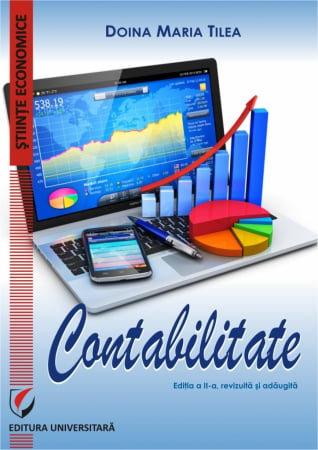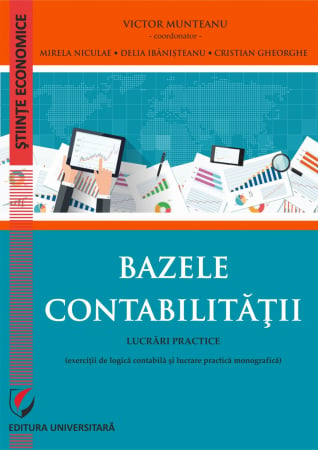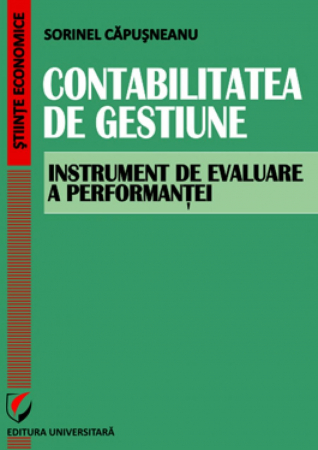Propuneri manuscrise: info@editurauniversitara.ro: 0745 204 115
Urmarire comenzi Persoane fizice / Vanzari: 0745 200 718 / 0745 200 357 / Comenzi Persoane juridice: 0721 722 783
6359.png) Economic cybernetics. An Equation-Based Modeling and Agent-Based Modeling Approach - Camelia Delcea, Ioana-Alexandra Bradea
Economic cybernetics. An Equation-Based Modeling and Agent-Based Modeling Approach - Camelia Delcea, Ioana-Alexandra Bradea
ISBN: 978-606-28-0629-3
DOI: 10.5682/9786062806293
Anul publicării: 2017
Editia: I
Pagini: 242
Editura: Editura Universitara
Autor: Camelia Delcea, Ioana-Alexandra Bradea
- Descriere
- Download (1)
- Cuprins
- Autori
- Review-uri (0)
The present book is intended to come to the attention of the researchers, teachers, practitioners, students or any other persons interested in fields such as: cybernetics, systems science, economics, modelling, forecasting, etc. due to the fact that it provides the necessary framework and tools for the knowledge and understanding of the aggregate phenomena that one may encounter in economic real-life situations.
The first chapter of the book is focusing on the economic modelling and it starts with a discussion on the similarities and differences between the simple and complex systems. Based on these, the authors are presenting the types of variables implied in the modeling process and the criteria needed to be satisfied by model in order to be valid.
The second chapter is dealing with the equation based modelling and, considering the literature, several models used over time in economic cybernetic modelling are presented step-by-step, such as Harrod’s growth model, Solow model, Black box, Malthus and Verhulst. A series of numerical applications are proposed here for a better understanding of the selected models.
The third chapter is moving to the agent-based modelling done with the NetLogo 6.0. software. Here, the types of agents are explained and the distinction between randomness and determinism is discussed and analysed based on the existing literature. The forth chapter is continuing the agent-based modelling with NetLogo 6.0. by presenting the interface and the code sections provided by the software. More, a large review of the models created in NetLogo is provided based on a series of papers indexed in ISI Thompson database.
Additionally, a model created in NetLogo by the authors is brought to the readers’ attention. This model uses one of the newest intelligent-artificial technique, namely the grey systems theory for shaping the variables and the relation between the agents.
The fifth chapter is dealing with the parallel between the equationbased modelling and agent-based modelling. For this, the authors are considering some examples solved with both methods with the purpose of showing the advantages and disadvantages brought by each of the considered methods. In the end, a short summary of pros and cons is presented along with some suggestions about how to decide which method is better considering the situation one decide to model.
The book ends with a discussion and quizzes section and references. Hoping that you will find the material useful, we wish you a pleasant reading!
Acknowledgements:
The authors want to thank Prof. Yingjie Yang and Prof. Sifeng Liu for the guidance and support offered during the last years and for the opportunity to be a part of an international research team. The book is a part of the results gathered through the IN-2014-020 Leverhulme Trust International Network Research Project.
-
ECONOMIC CYBERNETICS. An Equation-Based Modeling and Agent-Based Modeling Approach
Descarca
INTRODUCTION/ 9
1. ECONOMIC MODELING/ 11
1.1. Simple vs. Complex Systems/ 12
1.2. What is modeling? / 20
1.3. How can it be done? /21
1.4. Some properties of a model / 24
2. EQUATION BASED MODELING (EBM) / 27
2.1. Difference Equations /28
2.2. Differential Equations/ 43
3. AGENT BASED MODELING (ABM)/ 65
3.1. Why Agent-Based Modeling? / 66
3.2. Agents and Types of Agent-Based Modeling Software /67
3.3. Few Words about NetLogo/ 69
3.4. Randomness vs Determinism/ 72
4. MODELING WITH NETLOGO / 75
4.1. Interface Explained/76
4.2. Code Explained / 84
4.3. Command Center / 143
4.4. Research using NetLogo / 147
4.5. A Decision-making Model in NetLogo /168
4.6. A Grey Systems Therory and ABM Application in NetLogo /177
5. ABM VS. EBM – A CRITICAL ANALYSIS /197
5.1. Some Examples/ 198
5.2. Pros and Cons /213
5.3. Short Summary / 214
6. DISCUSSIONS AND QUIZZES/ 217
REFERENCES / 227
LIST OF FIGURES/ 237
LIST OF TABLES / 241
Ioana-Alexandra Bradea
Suport clienti Luni - Vineri intre 8.00 - 16.00
0745 200 718 0745 200 357 comenzi@editurauniversitara.ro
![Economic cybernetics. An Equation-Based Modeling and Agent-Based Modeling Approach - Camelia Delcea, Ioana-Alexandra Bradea [1] Economic cybernetics. An Equation-Based Modeling and Agent-Based Modeling Approach - Camelia Delcea, Ioana-Alexandra Bradea [1]](https://gomagcdn.ro/domains/editurauniversitara.ro/files/product/large/economic-cybernetics-an-equation-based-modeling-and-agent-based-modeling-approach-381-833351.jpg)














